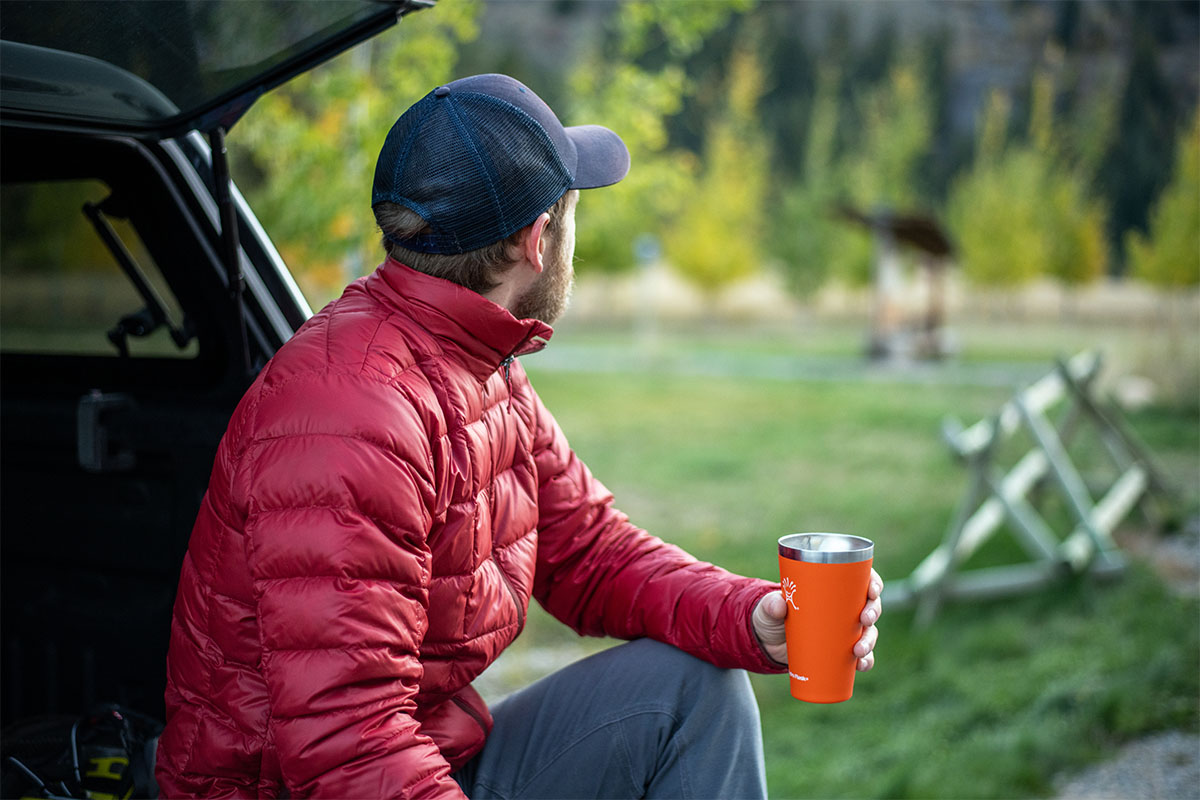
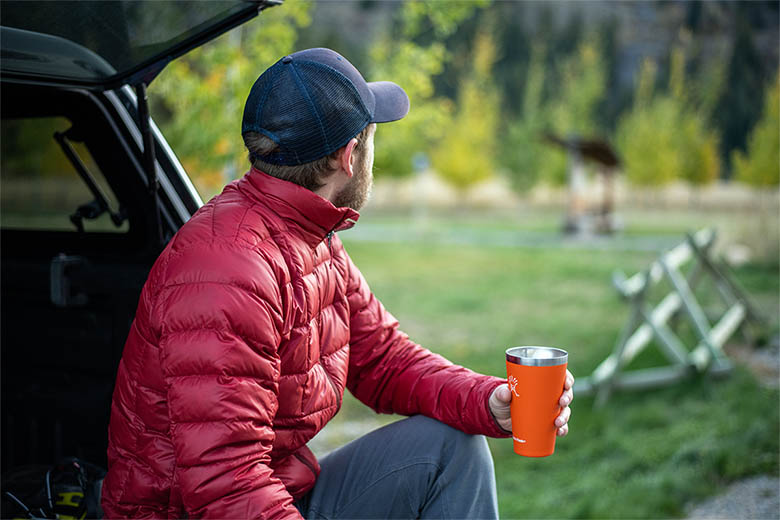
For the best in cozy and lofty warmth, down jackets are in a class of their own. The category covers a wide range of options, from lightweight and packable designs for backcountry use to stylish and hardwearing models for your winter commutes. Below we break down the primary considerations in choosing a down jacket, including warmth, fill power and fill weight, weight and packability, durability, and more. And to check out our top picks for this year, see our articles on the best down jackets and best women's down jackets.
Editor's note: We updated this article on December 17, 2024, to revamp our product recommendations, add newer photos from testing, and expand our section on sustainability.
Down jackets vary substantially in terms of warmth. On the lightweight end of the spectrum, popular models like the Mountain Hardwear Ghost Whisperer Hoody provide sufficient insulation for summer backpacking and shoulder-season conditions, while a winter-ready piece like the Feathered Friends Khumbu Parka is packed with enough down to handle sub-zero temperatures. To simplify the array of down jackets, we've broken them into three main categories: lightweight, midweight, and heavyweight.
A healthy percentage of down jackets fall into the lightweight category. We typically consider designs with about 3 to 4 ounces of down fill as being lightweight, which makes them great for shoulder seasons, warmer winter days, or as a skiing midlayer. Depending on what you wear underneath (and your activity level), a lightweight down jacket can provide sufficient warmth to just around freezing. . For anything colder than that, you’ll want to look in the midweight or heavyweight categories. One of the most popular lightweight down jackets is the Patagonia Down Sweater (5 oz. of 800-fill-power down), which is an extremely versatile piece.

Midweight jackets represent the smallest category here but an underrated one. Models like the Rab Microlight Alpine (1 lb. 0.5 oz.) pack in 5.4 ounces of 700-fill down, and the Patagonia Fitz Roy (1 lb. 1.1 oz.) nicely balances an ultralight construction with a healthy 5.6 ounces of higher-quality, 800-fill down. In practice, these jackets offer a noticeable boost in warmth compared to their lightweight counterparts above. We’ve worn midweight jackets with just a T-shirt underneath into the teens Fahrenheit and have managed to stay warm and cozy throughout.

For true winter conditions, a heavyweight down jacket is your best bet. These burly designs have the highest amount of down fill on the market and often feature weather-resistant shell fabrics, large hoods, and longer cuts for protection below the waist. In addition, some heavy-duty winter jackets see a drop in down quality (more on this in “fill power” below), as they can take on a more casual slant. Our favorite model for everyday wear and commuting is The North Face McMurdo, and on the other side of the spectrum, the Rab Neutrino Pro (7.5 oz. of 800-fill down) is more performance-oriented for serious outdoor use. For a complete look at the heavyweight down jacket options, see our article on the best winter jackets.
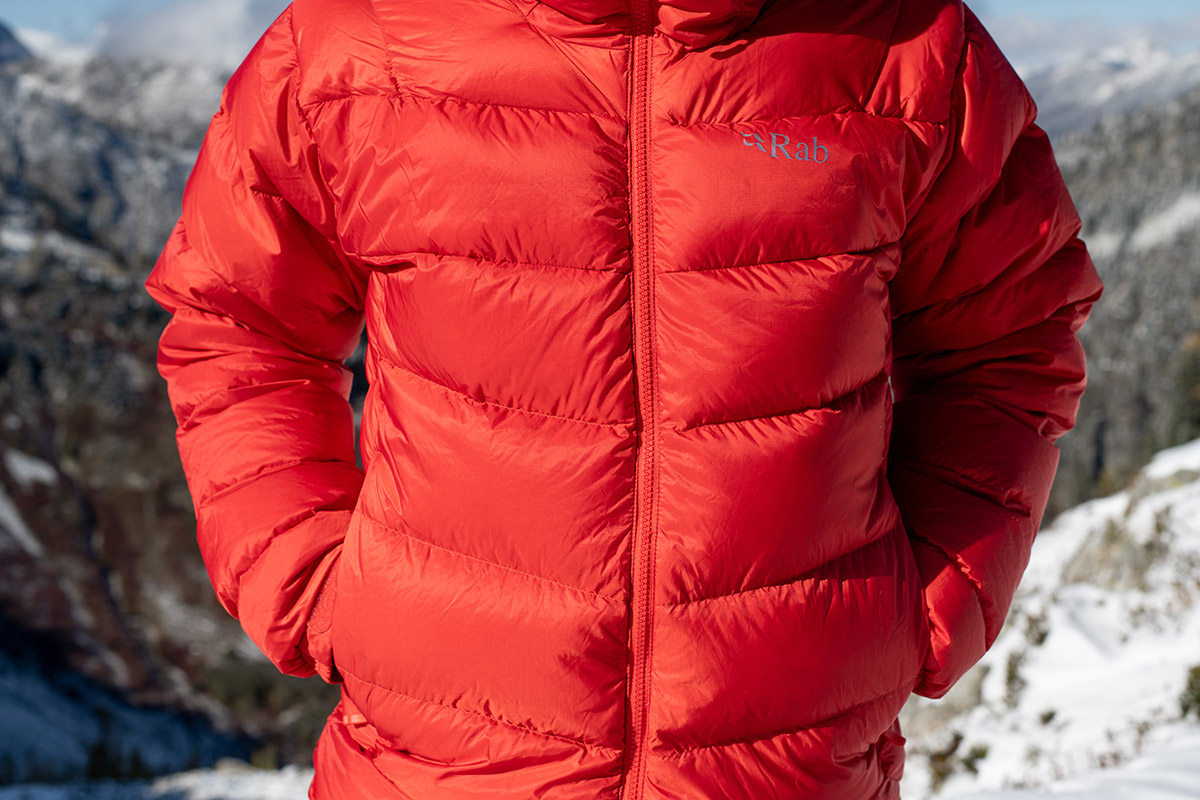
Two of the most commonly confused specs in the outdoor gear world are fill power and fill weight. Fill power measures down’s quality or amount of loft, with high-end models at 800-fill-power or higher. Fill weight, on the other hand, is the total amount of down in the jacket. Many manufacturers and retailers put a heavy emphasis on fill power—sometimes going as far as sewing the number onto the jacket’s cuff—but it's important to understand that fill weight is equally important. Unfortunately, the latter isn't widely publicized, and we often end up reaching out to manufacturers directly to pin down a jacket's fill weight (with varying levels of success).
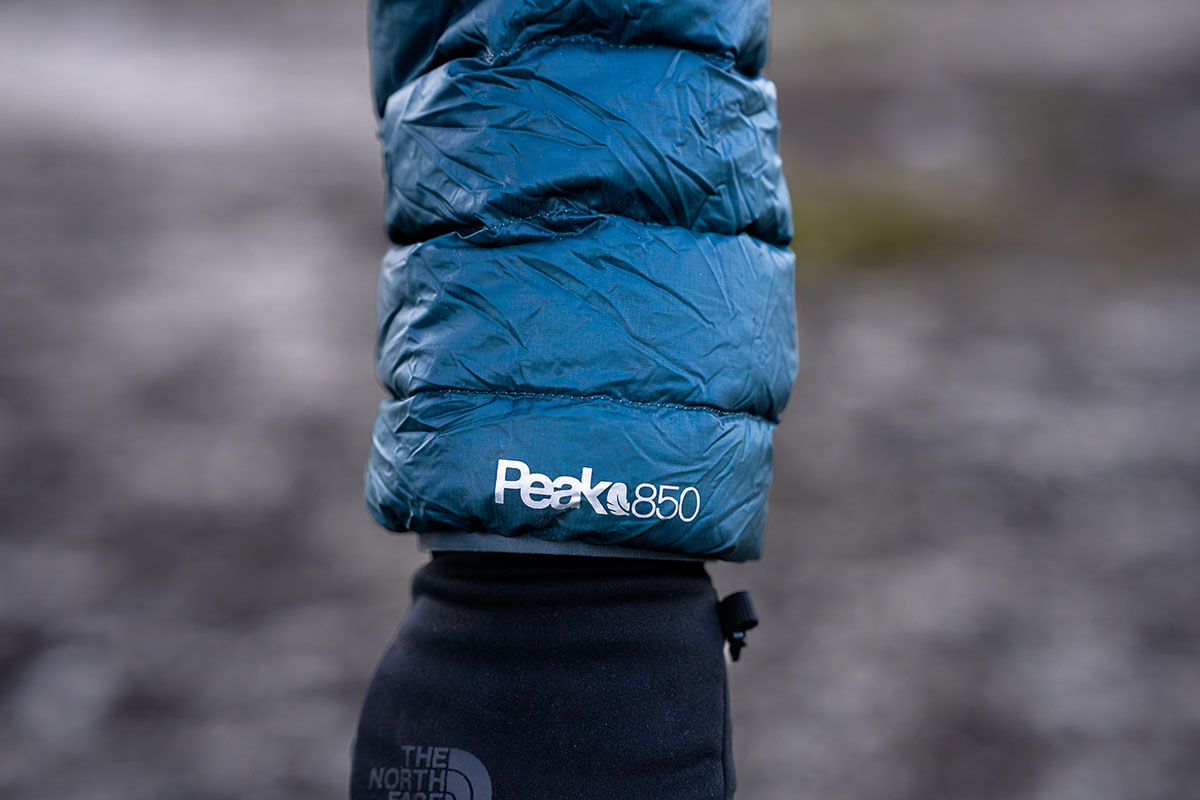
In choosing a down jacket, sometimes the warmth comparisons are easy. If two jackets use 800-fill-power down, it’s very straightforward to check the fill weights and see how much warmer one is compared to the other (i.e., 5 oz. of 800-fill will provide more warmth than 3 oz.). If the fill weights differ—800-fill down versus 650-fill down, for instance—it becomes more challenging. Lower-fill-power down has less loft and therefore creates less warmth for the weight, so it’s a sliding scale and each case is unique. In general, we always try to evaluate the fill power and fill weight together to make an informed decision (but again, it's not always possible to track down both specs). For a deeper dive, check out our article on Down Fill and Insulation Explained.
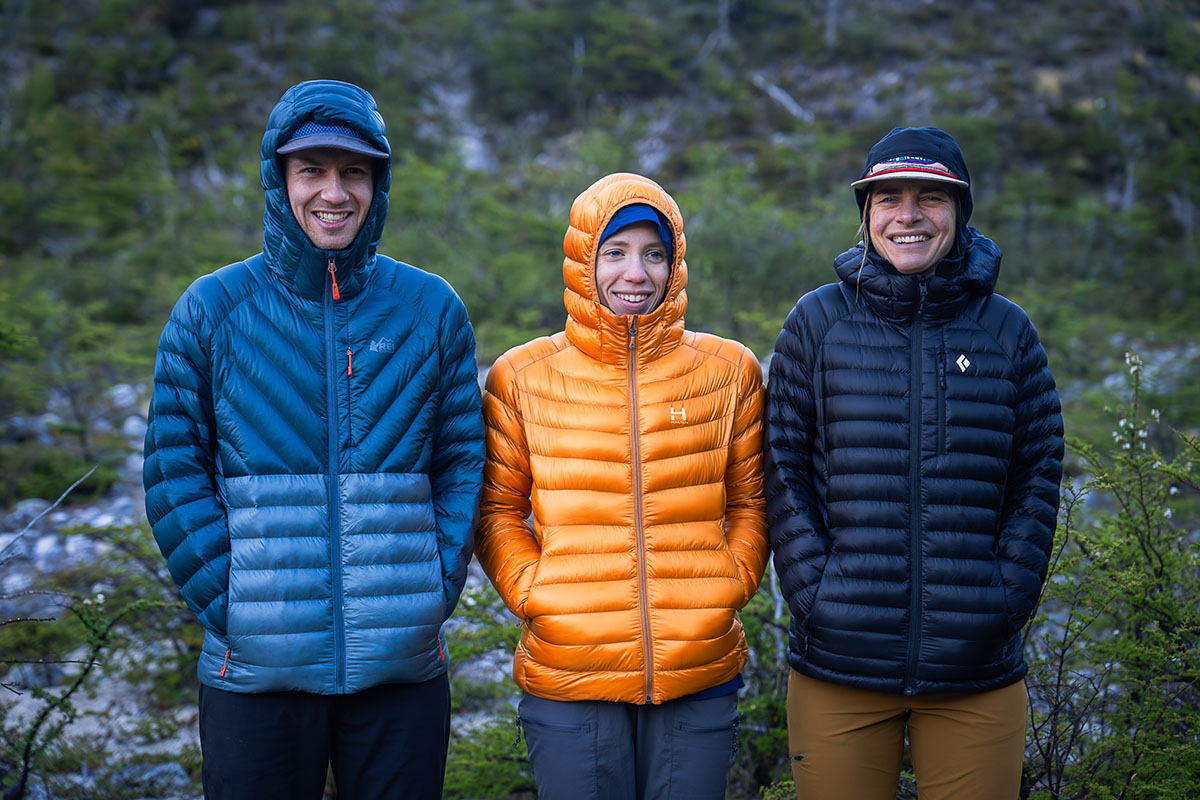
A key consideration in choosing a down jacket is how you intend to use it. Ultralight jackets meant for the backcountry are expensive and often less durable, and their designs come with compromises for everyday use. For example, the Arc’teryx Cerium Hoody ($400) uses premium 850-fill down and a relatively thin, 15-denier (D) shell to pack a lot of warmth into a streamlined, 11.9-ounce package. For summer backpacking or as a belay jacket for fair-weather climbing, the weight savings could be well worth it for many. On the other hand, the Cerium's relatively fragile exterior, trim build, and backcountry-focused feature set simply aren't practical for daily wear—not to mention the price.

If you only plan on wearing your down jacket around town and for light outdoor use when counting ounces isn’t paramount, you can save a lot of money without compromising on warmth. A jacket like the Outdoor Research Coldfront Down Hoodie is nearly as warm as the Cerium yet costs a more reasonable $279, and REI makes their 650 Down Jacket for a bargain-basement price of $129. In short, if you don’t need high-end, ultralight materials, going with more of an everyday down jacket can be a great way to save, and you’ll most likely get in bump in durability.
Weight matters to a lot to people in the outdoor gear world. And among down jackets, the number can vary quite a bit. At the ultralight end are minimalist pieces Montbell’s Plasma 1000, which weighs a remarkable 4.9 ounces (although we do have a number of issues with its build and fit), while a heavyweight winter parka like the Rab Neutrino Pro tips the scales at 1 pound 4.6 ounces. The good news is that many lightweight down jackets are in the range of 8 to 15 ounces, which realistically isn't a huge difference for many users. Again, cutting ounces often means higher-fill-power down, thinner shell fabrics, lighter zippers, and less in the way of features. In addition, many lightweight pieces are more expensive than their casual counterparts.
Packability is closely aligned to a down jacket's weight. All of the factors above, including high fill powers, thin materials, simplified feature sets, and even trim fits help decrease packed size. Whether or not this matters to you goes back to when and where you’ll be wearing the jacket. And it’s also worth noting that even some of the casual pieces like REI’s 650 Down Jacket can be easily squeezed in a pack or suitcase. Some models come with a separate stuff sack for storage, which we like but have a tendency to lose eventually, while others can be stuffed into their own pocket via a two-sided zipper. On the other hand, some larger models aren’t packable at all due to their thick shell materials. Regardless, it’s best to leave your down jacket unstuffed when storing it so that the plumage retains its maximum loft over time.
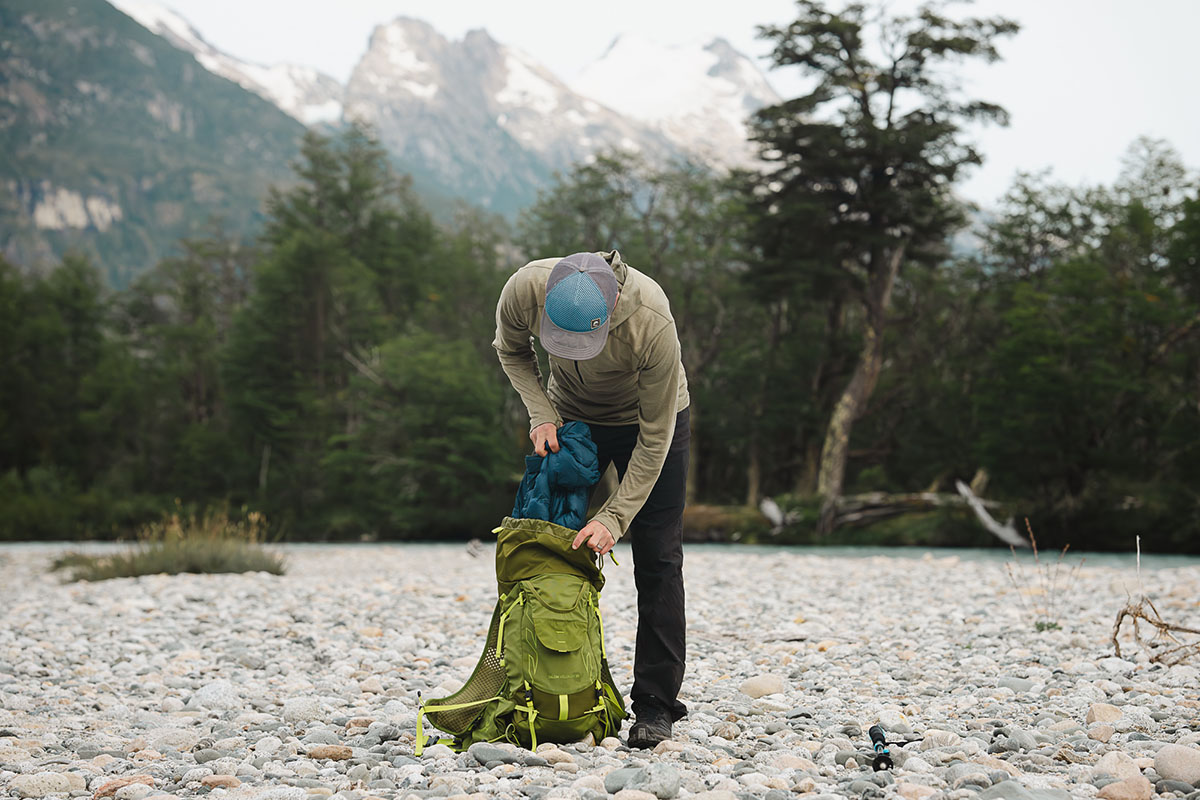
We’ll start by saying that down is not known for being able to withstand wet conditions on its own. When exposed to moisture, it clumps up and loses its ability to insulate, which is bad news if you need the warmth. For this reason, we often choose a synthetic jacket if we're going out in wet weather, or we bring along a rain jacket or hardshell in our pack for extra protection if the skies open up.
The good news is that most modern down jackets have a range of features to help mitigate light to moderate precipitation. First, many feature a durable water-repellent (DWR) treatment along the exterior that helps moisture bead up and run off instead of soaking in. Again, this is good for light rain and snow, but DWR coatings succumb fairly quickly in extended downpours. We’re also seeing a number of different versions of water-repellent and hydrophobic down on the market. In these cases, the down itself is treated so that it resists absorbing moisture better than untreated down, although it's still no match for the wet-weather assurance of synthetic fill.
In addition to DWR coatings and hydrophobic down, some brands have started incorporating synthetic insulation in areas most prone to moisture. For example, Arc’teryx’s Cerium collection uses down fill throughout most of the jackets with synthetic insulation in more exposed spots like the shoulders and hood—a strategy they call “Down Composite Mapping.” And last but not least, some down jackets like the REI Stormhenge 850 Down Hybrid Jacket are fully waterproof. With a 2- or 3-layer shell, you get the best of both worlds: the warmth and puffy feel of down with full wind and water protection.
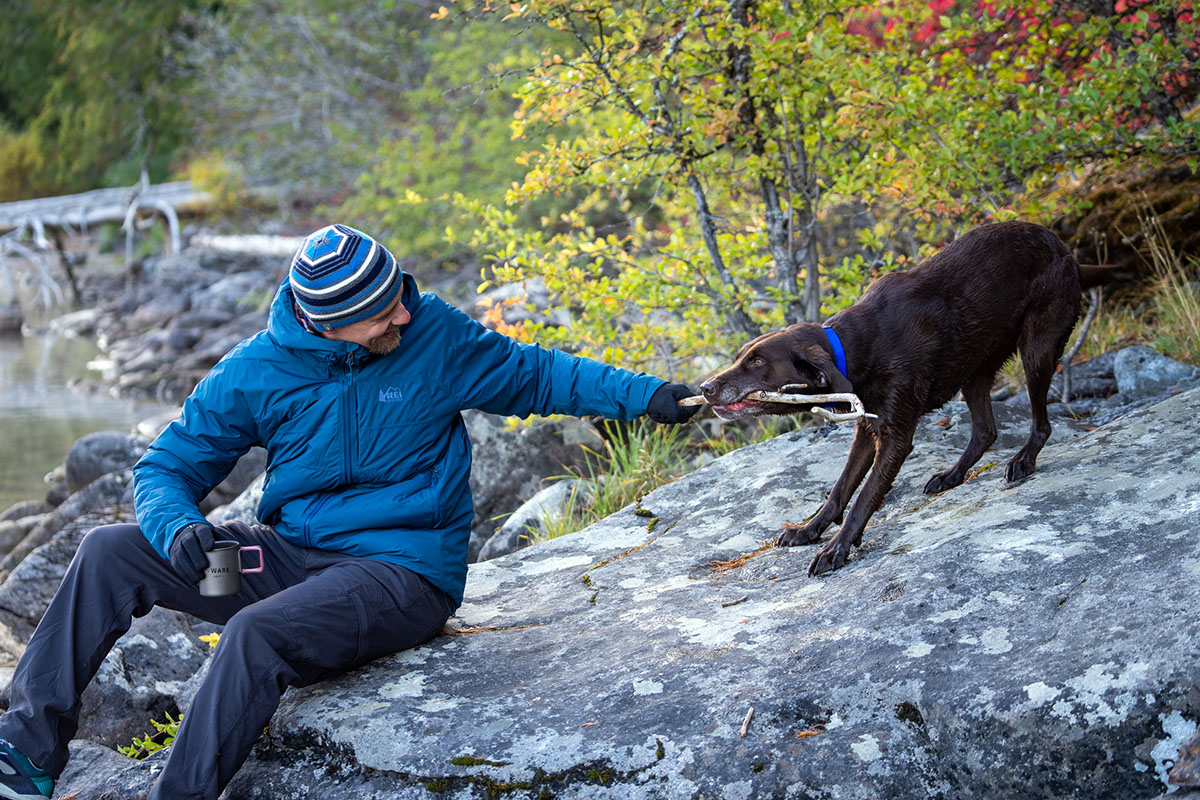
Similar to weight, the durability of your down jacket can vary significantly. Fabric thickness is measured in denier, or “D,” and the lower the number, the thinner the shell fabric. Ultralight pieces from brands like Montbell and Arc’teryx go as thin as 7 to 10D and require a lot of extra care to avoid snags and tears (these are not ideal everyday jackets). Moving more toward the middle of the spectrum, the Patagonia Down Sweater is 20D, which keeps the jacket reasonably light but also makes it considerably tougher. And full-on winter jackets like The North Face McMurdo have thick, burly shells that do an excellent job at resisting tears (with the biggest downsides being added weight and bulk).
In terms of durability, it's important to consider your intended uses. For an everyday jacket, we prefer a model that's at least 20D—this will offer enough toughness for scraping against branches, playing with your dog, and doing most normal activities. When you step into the 15D realm and below, the materials start to get very thin, more crinkly, and sometimes even slightly transparent. The sacrifices in durability are worth it for those carrying weight on their back for long distances or high into the mountains, but everyday users are better off with more practical fabrics.
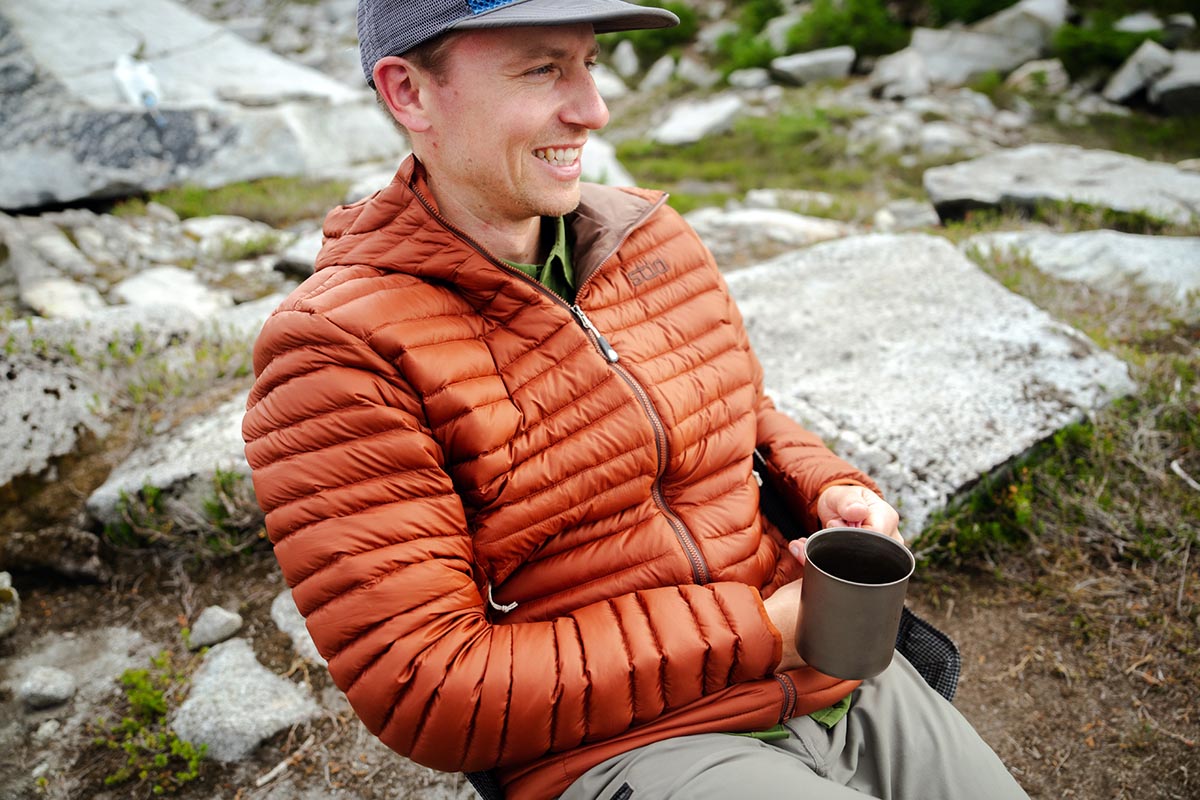
The insulation used in down jackets is sourced from ducks and/or geese, which raises some difficult ethical questions. Concerns over live-plucking and other harsh treatments of animals have plagued the industry in the past, but we’ve seen a significant shift in recent years. A growing number of brands are adhering to the Responsible Down Standard (you’ll see references to “RDS”), and Patagonia has been a key leader in this area by implementing their own Traceable Down Standard. The goal of each of both standards is to provide transparency in the sourcing process and eliminate inhumane practices. Additionally, the use of recycled materials has increased dramatically with no noticeable impact on performance or durability, as have bluesign-approved fabrics that have been sourced and produced to minimize their impact. And most recently, manufacturers have begun using PFAS-free DWR coatings that forgo the use of harmful per- and polyfluoroalkyl substances—"forever chemicals" that are notorious for their inability to break down over time.

Once you’ve settled on a specific down jacket model, one of the major design decisions you’ll need to make is whether you want a hood. A hood adds a nice dose of extra warmth around your head and neck but bumps up cost and weight slightly. For example, the men’s Patagonia Down Sweater is $279 and 13 ounces, while the hooded version is $329 and 14.8 ounces. In practice, we prefer a hood in most instances including daily wear (it’s always nice to throw the hood on when the mercury drops) and for backpacking (we often wear the hood at night). But for use as a midlayer for activities like downhill skiing, we don’t recommend going with a hood as it won’t fit over your ski helmet, and the extra fabric is prone to bunching around your neck. At the end of the day, this is largely a personal choice. But if you’re still on the fence and want to take a deeper dive into the topic, check out our article: Does Your Down Jacket Need a Hood?
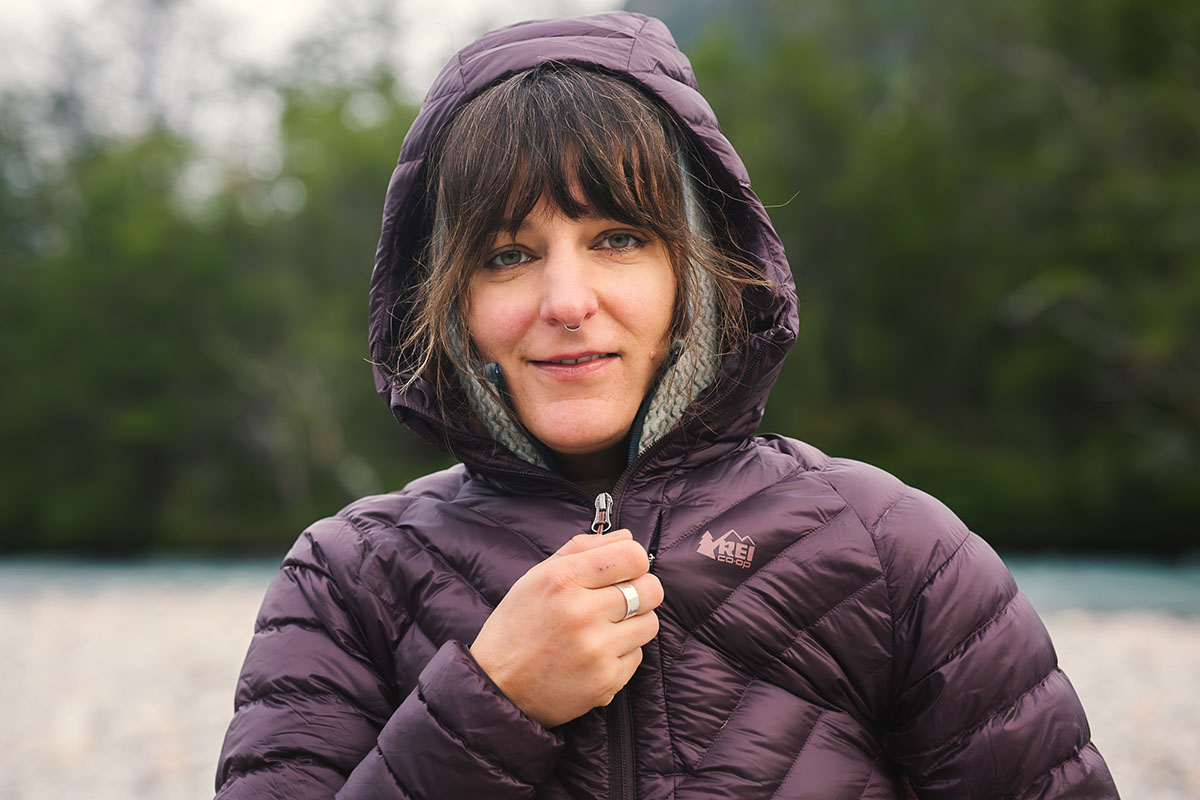
So far, you’ve heard many of the differences among down jackets: fill power, fill weight, denier, features, and more. All of these affect the price to some degree, and there's a wide cost range for down jackets. At the budget end of the spectrum, we love the REI Co-op 650 Down Jacket, which is $129 but offers an impressive amount of warmth and clean styling for the price (it’s currently our favorite cheap down jacket). On the other hand, premium performance pieces from brands like Arc'teryx, Rab, and Feathered Friends can cost upwards of $500—and even more if you need expedition-level warmth. The good news is that just about everyone should have an option to fit their desired price range and use cases, and if you’re willing to step down the fill power and premium fabrics and features, there are excellent deals to be had. For a complete list of our current top designs, see our detailed guide to the best down jackets.
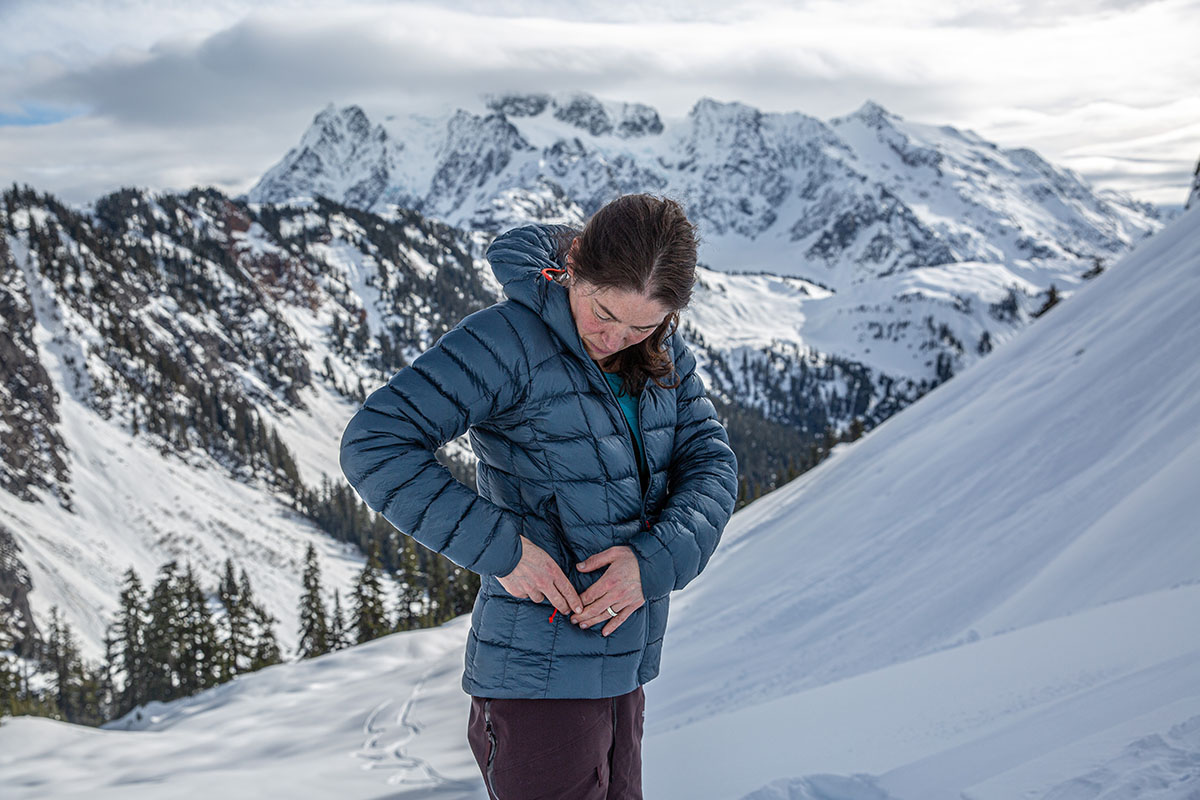
Last but not least, a great jacket that you’re going to have for years needs to fit well, so don’t overlook this aspect. In general, certain brands tend to run baggier than others. For example, we often find jackets from REI Co-op, Patagonia, Mountain Hardwear, and Columbia to be a bit boxy (to varying degrees), while Arc’teryx, Feathered Friends, and Mountain Equipment have more of a slim or athletic fit. This can impact how you are able to layer underneath or overtop, and it's directly tied to comfort and warmth, too. To be clear, however, there are plenty of exceptions within each brand lineup, so don’t consider these to be hard-and-fast truths. It’s best to try the jackets on in person, and if that’s not an option, you can glean some details from the manufacturer-listed fit (slim, regular, etc.). In addition, we include a section on fit and sizing in each of our in-depth down jacket reviews, where we call out specific experiences and offer comparisons to other models we've worn.
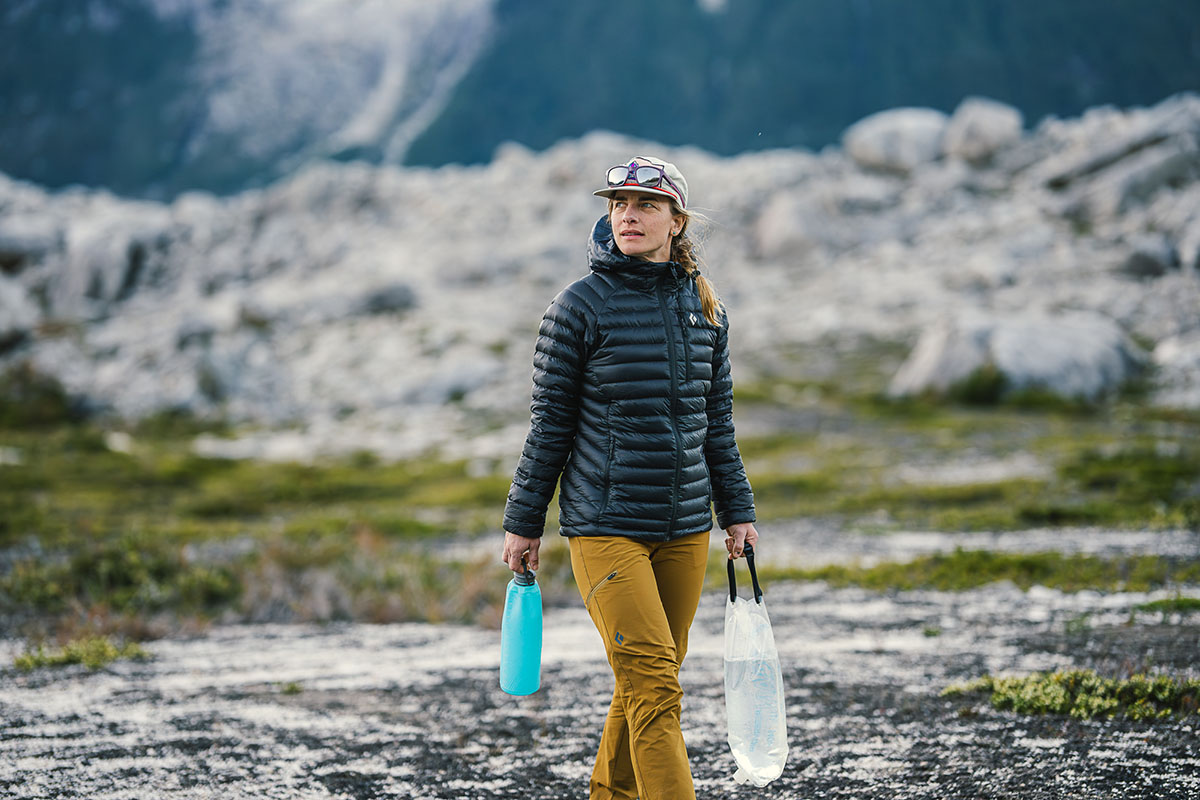
Now that you've got all the background on how to choose a down jacket, here are our top recommendations. For even more picks, check out our full articles on the best down jackets and best women’s down jackets.
Best Overall Down Jacket: Patagonia Down Sweater
A Close Second (With a Stronger Performance Slant): Arc'teryx Cerium Hoody
Best Budget Down Jacket: REI Co-op 650 Down Jacket
Best Ultralight Down Jacket: Mountain Hardwear Ghost Whisperer Hoody
Best Heavyweight Down Jacket for the Cold: Rab Neutrino Pro
Best Overall Women's Down Jacket: Patagonia Down Sweater
Best Performance Down Jacket: Arc’teryx Cerium Hoody
Best Budget Down Jacket: REI Co-op 650 Down Jacket
Best Ultralight Down Jacket: Rab Mythic Alpine Light
Best Everyday Down Parka: Patagonia Down With It Parka
Best Heavyweight Down Jacket: Rab Neutrino Pro
Back to Our Down Jacket Considerations See Our Winter Gear Reviews